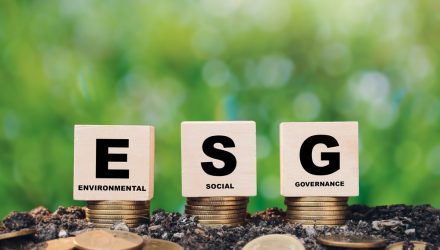There’s no sugarcoating it. Last year was unkind to many traditional environmental, social, and governance (ESG) exchange traded funds. Making matters worse, ESG opponents latched onto one year of rough performance, implying it was a permanent condition.
Experienced investors know that’s not the case and the long-term opportunity set for ETFs such as the IQ Candriam ESG US Large Cap Equity ETF (IQSU) remains compelling. When considering a product such as IQSU or its peers, investors should examine what went wrong last year and evaluate the long-term picture.
“Sustainable U.S. large-blend funds underperformed their conventional peers in 2022, which is reflected in their lower success rates (defined as surviving and beating the relevant index) for the year. Only 35% of sustainable funds outperformed the Russell 1000 Index during the year, while nearly 60% of their peers did so. It is even more impressive, then, that sustainable U.S. large-blend funds outperformed their conventional peers so heartily in the longer term,” noted Morningstar analyst Alyssa Stankiewicz.
Of course, the notion of misery loving company isn’t enough to placate skittish investors, but there’s still merit to the long-term ESG investment, particularly when market participants can access it in a convenient, cost-effective fashion as offered by IQSU.
“Over the trailing three- or five-year period, an investor seeking long-term returns would have been better off in a sustainable fund than in one of its conventional peers. Of the 451 U.S. large-blend funds an investor could have chosen in January 2018, 169 survived and beat the Russell 1000 Index, while 282 either closed or underperformed. Nearly 60% of the sustainable options succeeded, while only 35% of their conventional peers did,” added Stankiewicz.
Some of the biggest reasons why ESG ETFs stumbled last year are obvious, including above-average exposure to growth stocks and below-average or no exposure to fossil fuels producers.
“In 2022, on the other hand, the energy sector was the best-performing unit of the S&P 500 index, gaining a remarkable 66%. Funds with a structural underweighting to the energy sector, including many sustainable funds, suffered as a result,” concluded Stankiewicz.
Fortunately for the longer-ranging IQSU thesis, sector and factor leadership is fluid. What that means is that while energy and value stocks have been impressive over the past two years, those trends are permanent. Likewise, even if those trends persist, that doesn’t mean growth and technology stocks will subject investors to extended periods of downside.
For more news, information, and analysis, visit the Dual Impact Channel.
The opinions and forecasts expressed herein are solely those of Tom Lydon, and may not actually come to pass. Information on this site should not be used or construed as an offer to sell, a solicitation of an offer to buy, or a recommendation for any product.
